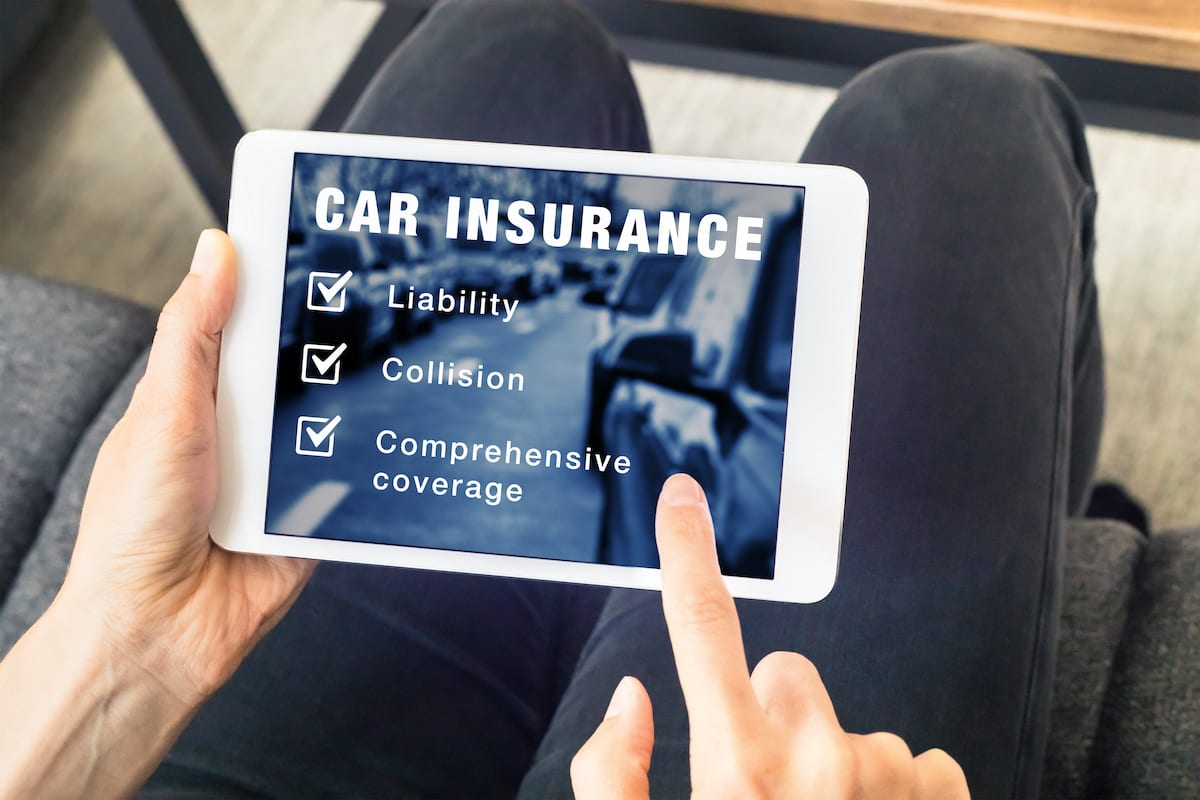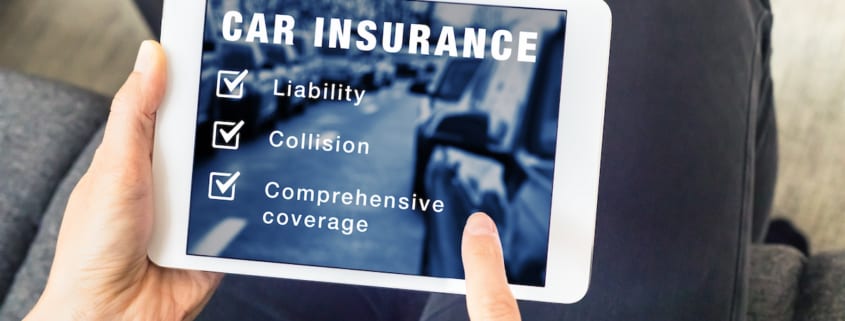Comprehensive Insurance – All You Need to Know

Auto insurance is complicated. Today, we’ll cover the basics of comprehensive insurance for cars, trucks, motorcycles and SUVs, with the general consumer – or non-professional driver – in mind.
While the concept of comprehensive insurance for autos stays the same regardless of what you do with a vehicle, business owners, CDL drivers and livery operators need a different level of liability insurance than the consumer policies we’ll cover here.
Let’s get started with some consumer auto insurance basics.
Auto Insurance Basics
First things first: auto insurance is based in part, on the concept of liability. When you buy car insurance, you’re protecting yourself from the costs of damage you might do to others.
Therefore, it makes sense that very heavy vehicles and speedy exotic rides can cost more to insure. They can do more damage to people and property. Lighter vehicles and motorcycles can cost less to insure.
Once you’ve chosen a limit of liability, you can add on other types of insurance like:
- Comprehensive insurance
- Collision coverage
- Bodily injury, personal injury and medical payments to others
- Other bells and whistles include coverages such as glass coverage, roadside assistance, and mechanical breakdown coverage.
Now, let’s get into comprehensive coverage.
What is Comprehensive Auto Insurance?
Comprehensive insurance – aka “comp” “comprehensive” and “comprehensive coverage” – protects your investment in a vehicle from issues other than a collision. It normally covers situations like:
- Theft, or damage from an attempted theft (glass may or may not be included)
- Civil unrest, riot, group vandalism
- Natural disasters and weather issues (hail, lightning)
- Fire, should your garage burn down with your car inside it
- Random incidents, like a tree branch falling on your vehicle
- Impacts from animals
Comprehensive insurance does not cover expenses following an auto accident such as:
- Damage to your car
- Damage to another car involved in the collision
- Medical expenses for you or your passengers
Comprehensive Insurance and Lienholders
If you’re making payments on a car to a lienholder (usually a bank or credit union), that financial institution will usually require you to carry both comprehensive and collision coverage.
They can make that stipulation because, until the car is paid in full, they technically own the vehicle.
If you cancel your auto insurance before the vehicle is paid off, the bank will find comprehensive and collision coverage elsewhere – and you’ll end up paying for it in your car payment. It won’t be cheaper. Vehicles are expensive, and the bank is looking to protect their investment should the car get stolen, etc.
Comprehensive Coverage vs. Collision Coverage
As the name implies, collision coverage only applies to collisions. It doesn’t matter if you crash into a home, another car or public property.
Nearly every auto insurer offers a standard policy that includes liability, comp and collision coverage. Your price can vary a lot from one insurer to the next.
Factors That Affect the Price of Comprehensive Insurance
From the type of car you drive, to the deductible you select, many factors can affect your price for comprehensive insurance.
Deductibles – One of the Most Significant Price Factors of Comprehensive Coverage
A deductible is a set amount of money that you agree to pay before insurance “kicks in.” The higher your deductible, the less comprehensive insurance will cost.
- For instance, if you agree to a deductible of $1,000, and a tree limb falls on your car causing $4,000 damage, you are responsible to pay the first $1,000. Your insurer will pay the other $3,000.
Our grandparents lived in a time when comprehensive insurance deductibles were $50 to $500. But between inflation and the costs of new technology and safety features in vehicles, consumers can no longer buy a new Mustang for $7,000.
As the cost of vehicles increase, so does the cost of comprehensive insurance.
- Modern auto insurance deductibles range from $250 to $5,000, but your lienholder might weigh in too, and request that you keep comprehensive insurance with a deductible of $1,000 or less.
Claims History & Driving History
Every time you make a claim with your auto insurance company, they make a detailed record of it – and share that information with other insurers, too. While one accident might not cause your insurance to increase, know that repeat claims will cause your rates to go up.
Speeding tickets, Driving Under the Influence (DUI / DWI / DWAI depending on your state laws), and other moving violations can affect your comprehensive insurance prices, too.
- California has an interesting law, that requires all auto insurers to give “good drivers” a 20% discount on their auto insurance rates – including comprehensive coverage.
- That 20% is immediately pulled after an at-fault accident, a DUI conviction, or the driver accumulates more than one point on their license.
But even good drivers can pay high prices for comprehensive insurance coverage.
Driver Risk Rating
Young, inexperienced drivers will pay more for all types of auto insurance, including their comprehensive coverage.
Understand that auto insurers have more than a century of records to analyze. They’ve discovered that teenage drivers, and young male drivers under 25, are the riskiest drivers.
- The Centers for Disease Control (CDC) says motor vehicle crashes are the second leading cause of death for US teens.
But even safe, mature drivers can pay high prices for comprehensive insurance.
Vehicle Details Could Affect Comprehensive Insurance Prices
Some vehicles are more costly to fix. Every year new makes and models hit the US market, and insurance companies pay close attention to the cost of repairing them over time. You would expect to pay more for comprehensive coverage on a new BMW 7 series, than a Honda Accord of the same year, but note that sometimes insurers discover a particular model is more expensive to repair than others.
Most cars, trucks and SUVs on the market today have some anti-theft devices and alarms. If your vehicle doesn’t, comprehensive insurance might cost more.
Vehicles with a lot of technology in the dashboard might be more expensive to insure, overall. All it takes is one tree falling on your car to destroy all those sensitive parts. Then, the car would need to be “totaled out” because the damage would cost more to repair than the value of the car.
Should You Buy Comprehensive Car Insurance?
Whether or not you should purchase a comprehensive car insurance policy depends on several factors.
You should get comprehensive coverage if:
- You are leasing or financing your car. In fact, it may be required by your lender or lessor.
- Your car is under 10 years old and valued at more than $3,000. The more your car is worth, the more you likely it is you need comprehensive coverage.
- You can’t afford out-of-pocket expenses. If you don’t have the finances to pay for damages of the kind that comprehensive insurance covers, it’s probably a good idea to get a policy.
Both comprehensive and collision insurance are optional. Together they help pay for damage to your car in a full range of situations. See our auto insurance information to learn more about all your auto coverage options and compare quotes.

 EINSURANCE
EINSURANCE EINSURANCE
EINSURANCE EINSURANCE
EINSURANCE